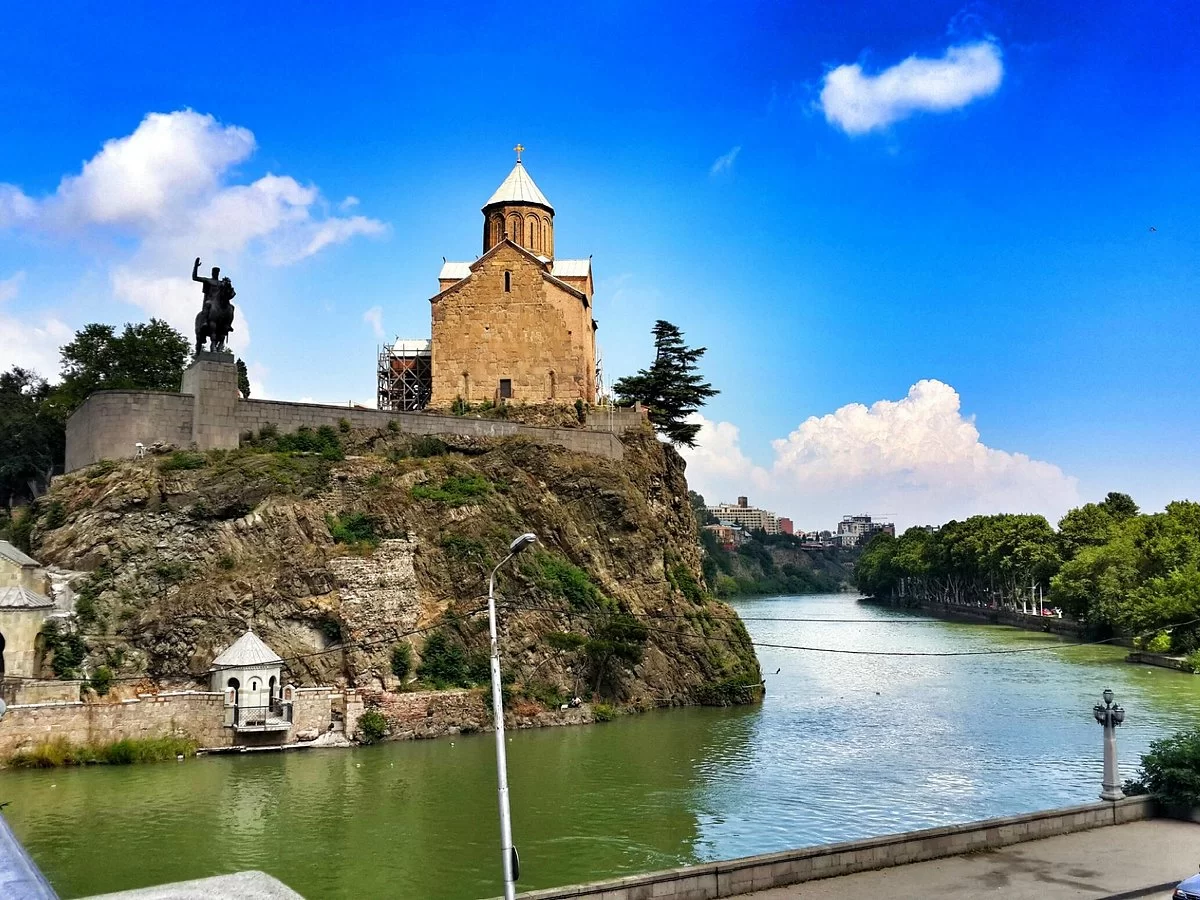Metekhi church

Tbilisi Metekhi temple is located in one of the old neighborhoods of the city – Avlabari. According to the legend the temple was built during the reign of King Vakhtang Gorgasali at the end of V c. AD. The legend claims as well st. martyr Shushanik, spouse of Varsken Pitiakhshi of Kartli to be buried here. Her life is narrated by monk Jacob in his “Martyrdom of st. Shushanik” the earliest Georgian original composition dated back by V c. but neither the fact of construction of the church nor of the interment of st. Shushanik is confirmed by any other more or less reliable sources.
However, it is doubtless that the current church is not initial. For instance, in times of Qween Tamar, in the end of XII c. a church stood there together with the fortress and the royal palace located nearby. The Head of Tbilisi garrison ordered to burning of the palace and the church in 1235, during the invasion of Mongols. The current building was erected in 1278-1289, in the time of King Demetre Tavdadebuli (Dmitry the Sacrificed). As a result, the current domed construction is of XIII c. with the layout strongly influenced by that of the previous church as far as the design with three extended apses and four independently erected dome supporting columns is absolutely unknown for the referred above period of construction of the temple.
Facades faced with neatly hewn stones indicate the formation of the new decorative system: walls are parted by horizontal strips/belts or small inches arranged on northern and western facades. At the same time, the system with a huge cross and a couple of fretwork squares already used in earlier times has been repeated on the exterior of the extended apse of the sanctuary. Metekhi temple is richly adorned with fretwork performed by good professionals, although this decoration lacks expressive plasticity so common for previous centuries.
During its long lifespan, the temple has been reconstructed many times. There are several layers of brickwork refurbishment conducted in XVI, XVII, XVIII and XIX cc. traces of which are easily noticeable on the construction body.
Following the establishment of Russian rule in Georgia remains of the stone wall surrounding the temple had been destroyed and a prison was built instead. After the Soviets took over, the prison was abolished in 1934 and the whole of the space together with the church was rearranged as the art museum. Afterward, when the museum has been relocated, the church was emptied. At different times it was used as an artistic workshop, and finally as a theatre. Currently, the temple is active again.
We often visit Metekhi plateau during our Tbilisi city tours.


















